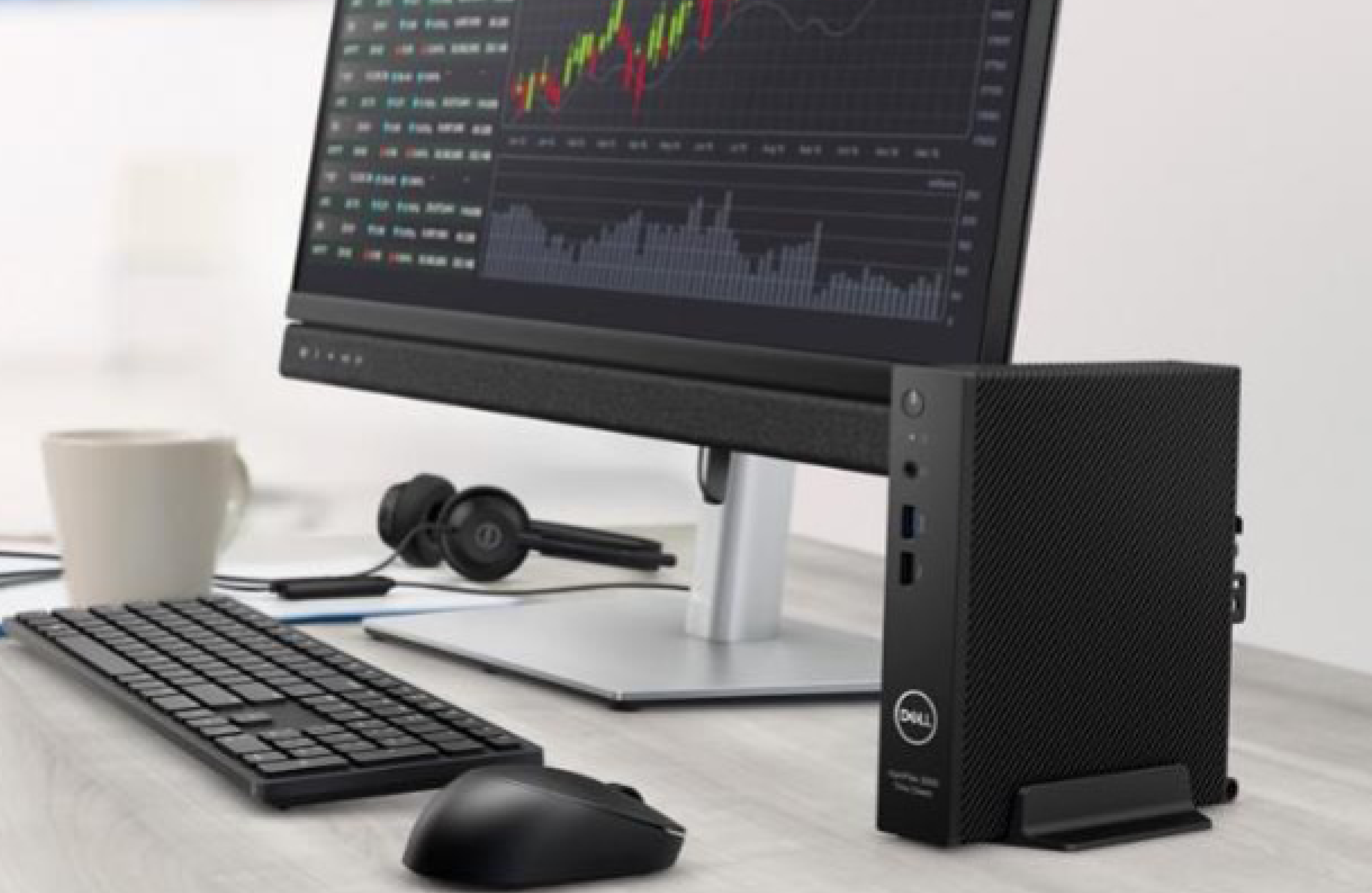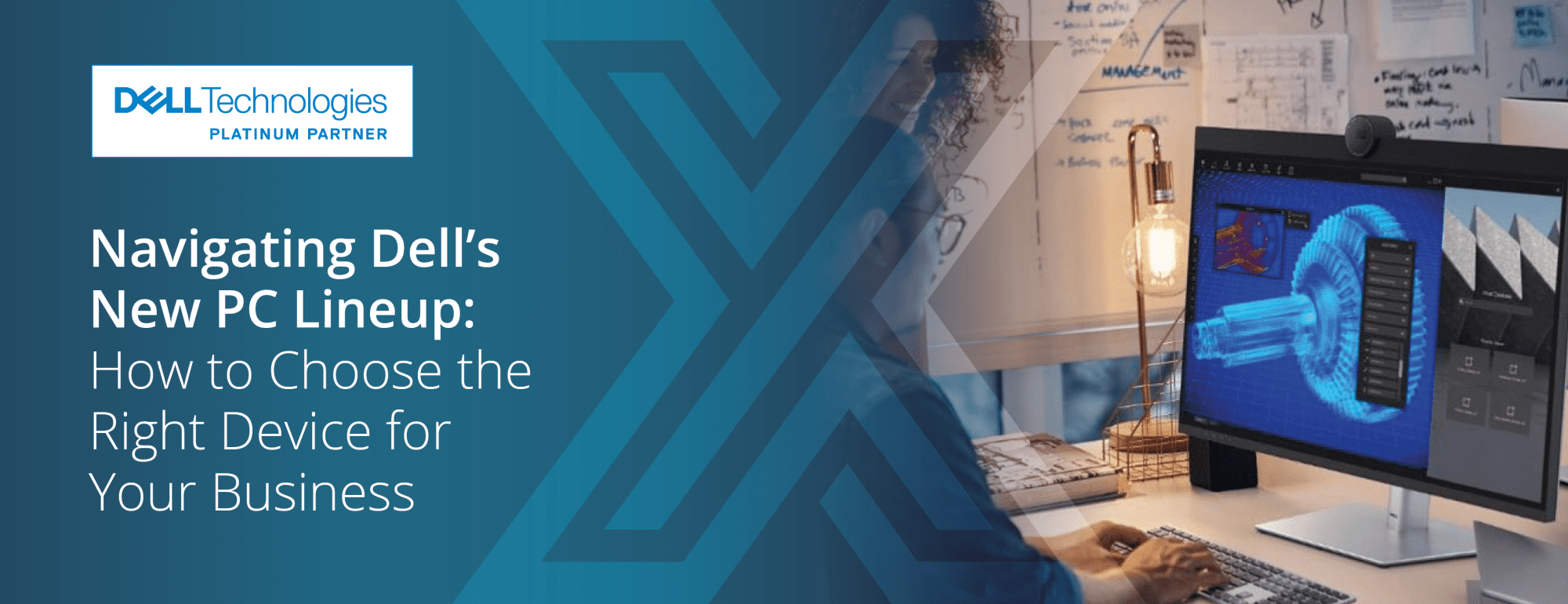Choosing the right devices for your organisation is a critical decision. The wrong choice leads to lost productivity and frustrated users, while the right device can be a catalyst for efficiency and growth. However, navigating the vast and often complex landscape of PC models, sub-brands, and specifications can be a challenge for even the most experienced IT teams.
Dell Technologies has directly addressed this challenge. Based on extensive customer feedback, they have simplified their entire client solutions portfolio. The familiar names like Latitude, OptiPlex, Precision, and XPS are being streamlined into a new, more intuitive framework.
We believe this is a positive step that brings much-needed clarity to device procurement. Here’s what you need to know about the new lineup and how XMA can help you select, deploy, and manage the right devices for your specific needs.
The New Framework: Simple, Clear, and Purpose-Built
While the new branding simplifies the purpose of each product line, the specific technical specifications (like the exact processor model, memory amount, or storage capacity) will still be configurable. The new system provides a clear framework, allowing you to understand the level of performance and features to expect from each category and tier.
Dell
This category, designed for play, school, and work, consolidates the former Inspiron and XPS product lines. It’s aimed at users who need versatile devices for a wide range of general computing tasks.
- Premium (formerly XPS): You can expect the highest-end specifications in this tier, including the latest generation Intel Core Ultra or AMD Ryzen processors, dedicated graphics options, high-resolution displays (often with OLED options), and premium build materials like CNC-machined aluminium. These are designed for ultimate performance and design in a consumer-focused device.
- Plus (formerly Inspiron Plus): A step up from the base models, these devices offer more powerful processor options and often include discrete graphics cards, making them suitable for light content creation and more demanding multitasking.
- Base (formerly Inspiron): These are the standard, all-around devices suitable for everyday tasks like web browsing, video streaming, and using office applications. They provide excellent value and reliable performance for general use.
Dell Pro
This is the core business line, built for professional-grade productivity. It consolidates the former Latitude, OptiPlex, and Vostro series, offering a range of options optimised for corporate environments. The key differentiators here are manageability, security, and durability. The product tiers are clearly defined to match different roles within an organisation.
- Premium (formerly Latitude 9000 & 7000 series): This tier offers the ultimate in design and mobility for business users. Expect ultra-light laptops and compact desktops with the latest Intel or AMD processors, robust security features, and premium materials for maximum durability on the move.
- Plus (formerly Latitude 5000 series & OptiPlex Plus): This is the most scalable performance tier, designed for the majority of knowledge workers. These devices offer a wide range of configuration options, allowing you to balance performance and cost effectively across a large user base.
- Base (formerly Latitude 3000 series & Vostro): This tier provides a baseline of business-grade durability, manageability, and security. These devices are ideal for task-based work or as standard-issue machines where core business functionality is the priority.
- Essential (Dell Pro only): This tier is business-ready with essential security and manageability features, making it a cost-effective entry point for organisations needing reliable, commercially-sound devices.
Across all tiers, the new model identifiers will clearly indicate the CPU vendor (0 for Intel, 5 for AMD, 7 for Qualcomm) and the form factor, such as the screen size for a laptop or Tower, Slim, and Micro for desktops.
Dell Pro Max
This workstation-class category is designed for maximum performance, replacing the Precision brand. These devices are engineered for specialists in fields like design, engineering, and data science who use resource-heavy applications.
Expected Components:
- Processors: You will find the most powerful CPUs from Intel (Core Ultra 9, Xeon) and AMD (Ryzen Threadripper) in this category.
- Graphics: The key differentiator is the inclusion of professional-grade dedicated GPUs, such as NVIDIA’s RTX Ada Generation or AMD’s Radeon PRO series. These are certified for stability and performance with professional software from vendors like Autodesk and Adobe.
- Memory & Storage: These machines are configured with large amounts of high-speed RAM (often with ECC memory options for error correction) and fast NVMe storage to handle large datasets and complex files without bottlenecks.
- Tiers: Like the Dell Pro line, the Premium, Plus, and Base tiers will indicate the level of performance and features, allowing you to match the machine’s power to the specific demands of the user’s software.
How XMA Helps You Build the Right Device Strategy
Understanding the new lineup is the first step. The next is applying that knowledge to your organisation’s unique environment. This is where XMA’s expertise as a Pragmatic Expert becomes a critical asset.
- Expert Guidance: Our specialists have a deep, practical understanding of these new Dell devices and, more importantly, how they perform in real-world business and public sector environments. We work with you to analyse your user personas and their specific workloads, ensuring you invest in the right level of performance for each role, avoiding both underpowered and over-specified devices.
- Public Sector Compliance: For public sector bodies, procurement is rightly governed by strict rules. XMA is an approved supplier on key government frameworks, including the Crown Commercial Service (CCS). We provide secure and compliant IT solutions that demonstrate clear value-for-money and meet the stringent requirements of government, healthcare, and education organisations.
- Device Management as a Service (DMaaS): Procuring the device is just the beginning. The real challenge lies in deploying, managing, securing, and refreshing your entire device fleet. XMA’s DMaaS takes this operational burden off your IT team. We handle the full lifecycle of your devices, from configuration and deployment to ongoing management and eventual secure disposal. This provides you with predictable costs and frees up your internal IT resources to focus on strategic projects that drive your organisation forward.
Dell’s new, simplified portfolio is a welcome change that brings clarity to the market. By partnering with XMA, you can be confident that you are not only choosing the right devices but also implementing a comprehensive strategy for managing them effectively and securely.
If you’re interested in Dell’s new lineup, contact us at enquiries@xma.co.uk to get started.












 Monitoring by Hotjar
Monitoring by Hotjar